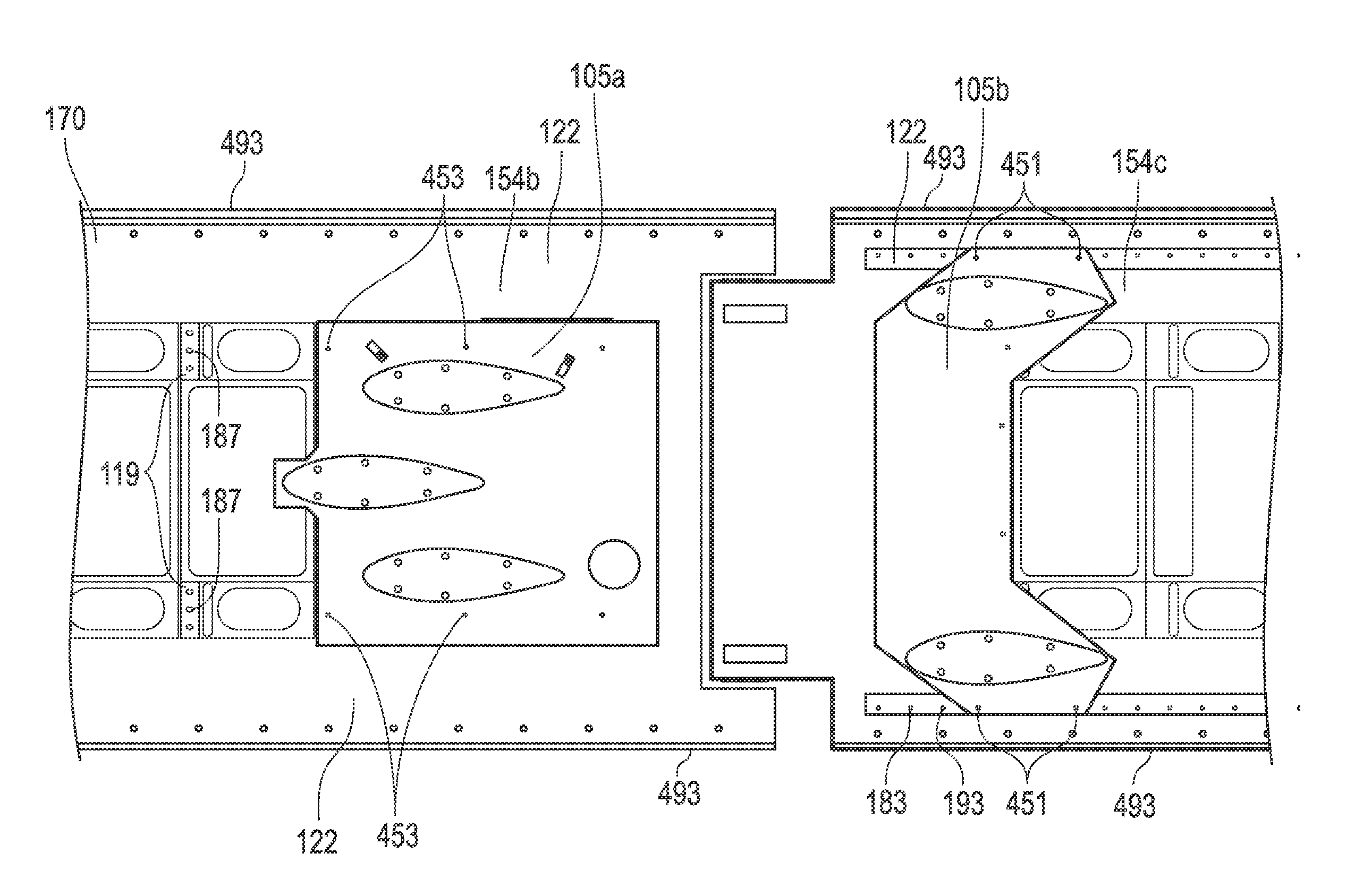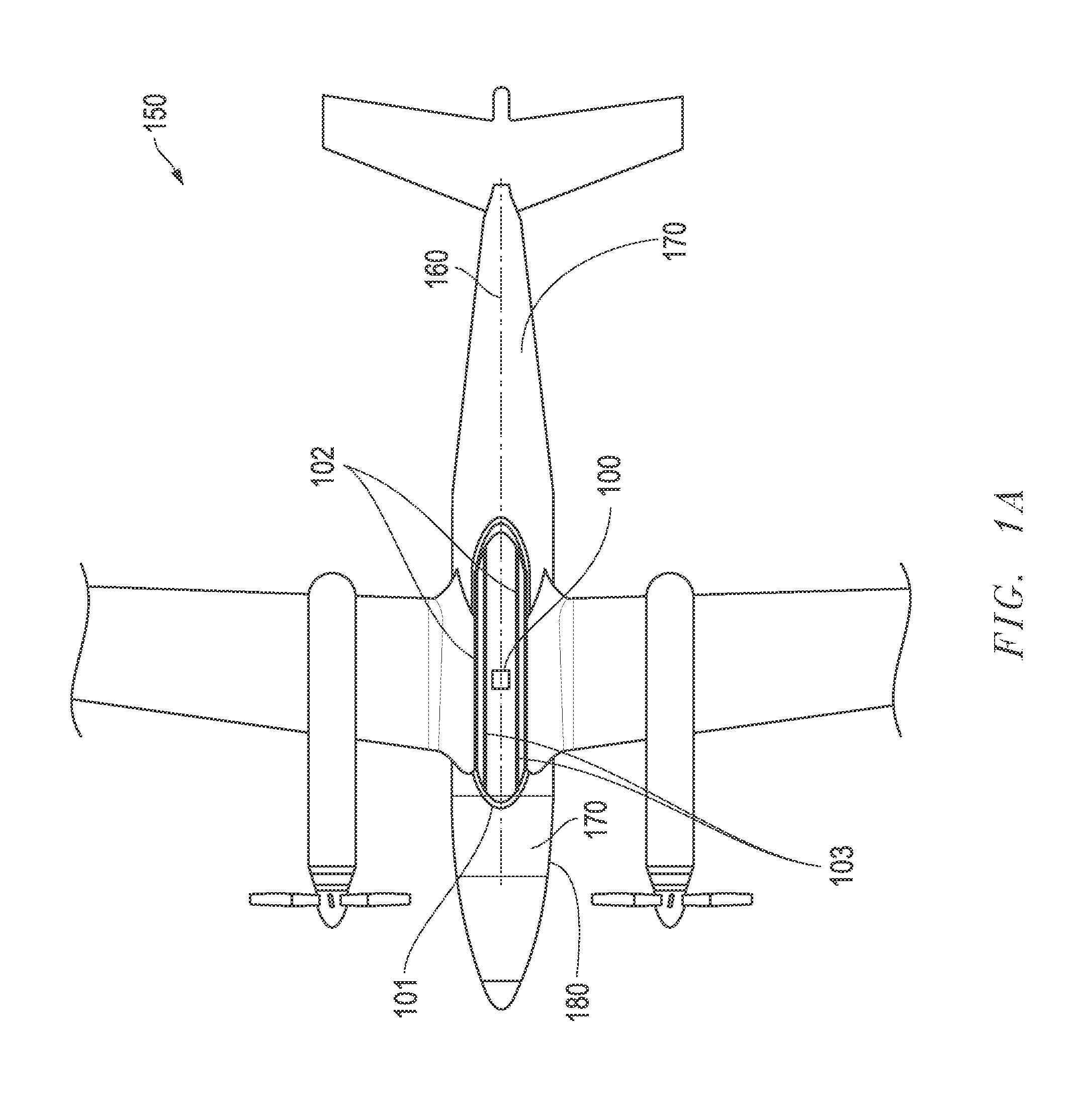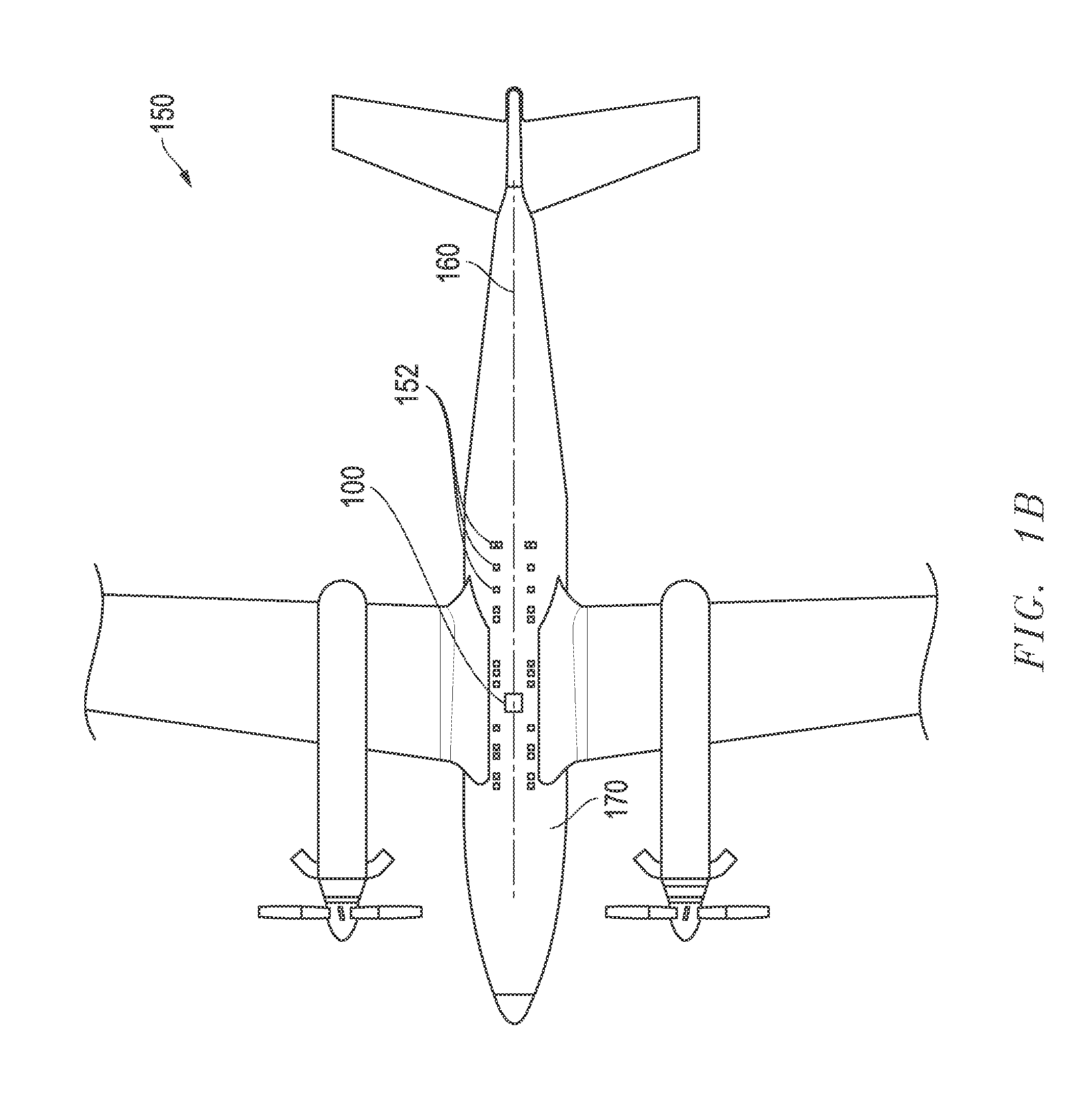Reconfigurable Payload Systems (RPS) For Aircraft And Methods Related Thereto
a payload system and reconfigurable technology, applied in the field of aircraft, can solve the problems of increasing the cost of payload modification, extending the time schedule, and complicated design methods, and achieve the effect of saving time and expens
- Summary
- Abstract
- Description
- Claims
- Application Information
AI Technical Summary
Benefits of technology
Problems solved by technology
Method used
Image
Examples
Embodiment Construction
[0070]FIG. 1A illustrates a simplified bottom sectional view of a fixed winged aircraft 150 and installed components of a RPS according to one exemplary embodiment of the disclosed systems and methods. Although a fixed wing aircraft is illustrated, it will be understood that the disclosed systems and methods are equally applicable to rotary aircraft installations and configurations. In this particular embodiment, the installed components include a pair of substantially parallel inner payload rails 103 coupled to the structure of the aircraft 150, a pair of substantially parallel outer fairing rails 102 coupled to the structure of the aircraft 150, a quick disconnect panel 100, and an exemplary aerodynamic modular fairing 101 coupled to the outer fairing rails 102. In the illustrated embodiment, RPS is shown installed and oriented along and substantially parallel to the longitudinal axis 160 of aircraft 150 on the bottom side 170 of the aircraft fuselage 180. In one exemplary embodim...
PUM
 Login to View More
Login to View More Abstract
Description
Claims
Application Information
 Login to View More
Login to View More - R&D
- Intellectual Property
- Life Sciences
- Materials
- Tech Scout
- Unparalleled Data Quality
- Higher Quality Content
- 60% Fewer Hallucinations
Browse by: Latest US Patents, China's latest patents, Technical Efficacy Thesaurus, Application Domain, Technology Topic, Popular Technical Reports.
© 2025 PatSnap. All rights reserved.Legal|Privacy policy|Modern Slavery Act Transparency Statement|Sitemap|About US| Contact US: help@patsnap.com



